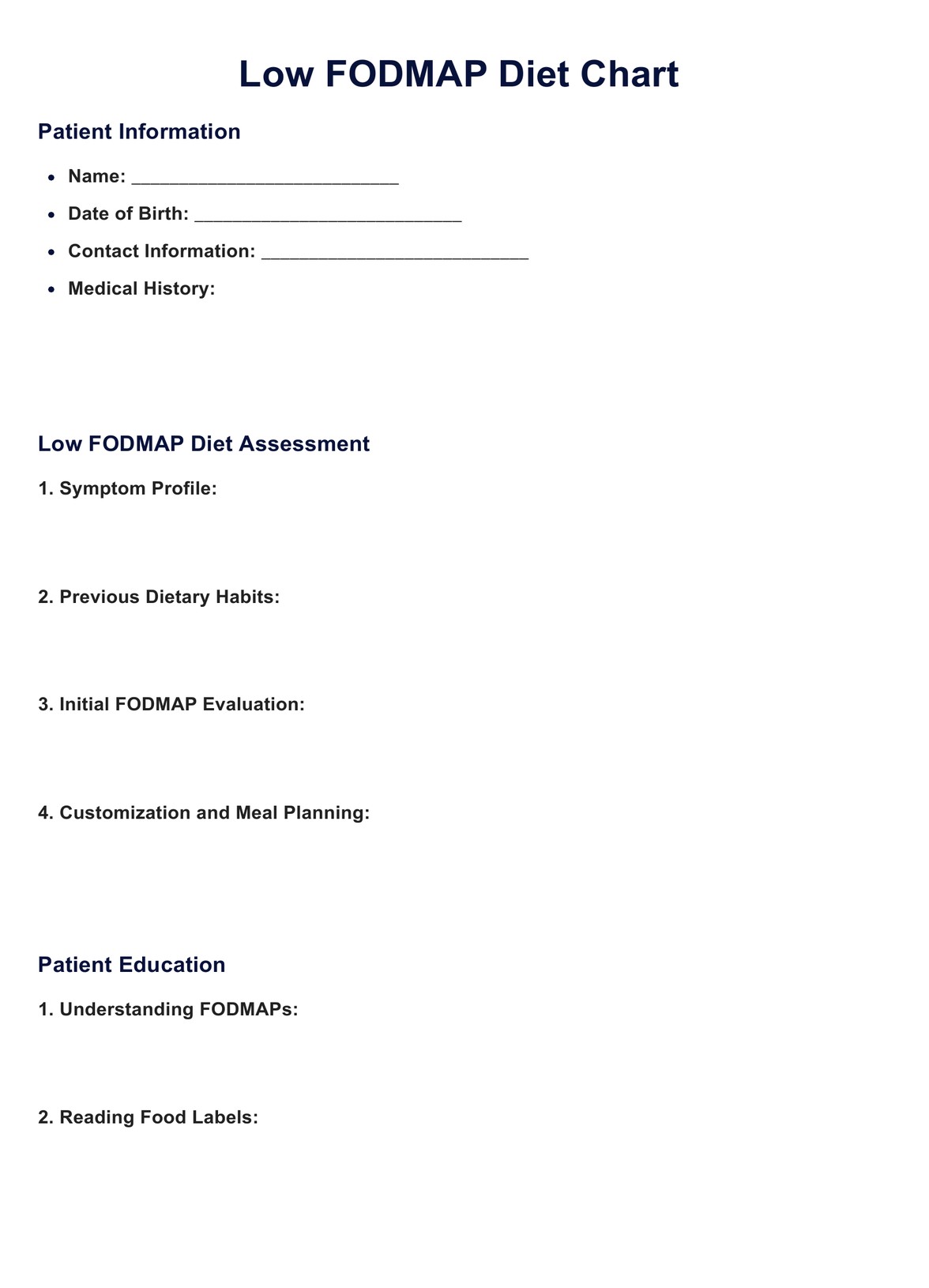Individuals with digestive discomfort, especially those diagnosed with irritable bowel syndrome (IBS), often request a Low FODMAP Diet Chart. Healthcare practitioners, including dietitians and general practitioners, also commonly recommend it.

Low FODMAP Diet Chart
Optimize digestive health with our Low FODMAP Diet Chart—a personalized PDF guide for tailored meal planning and effective symptom management. Download now!
Use Template
Low FODMAP Diet Chart Template
Commonly asked questions
Low FODMAP Diet Charts manage symptoms like bloating, gas, and abdominal pain. They're crucial for those diagnosed with IBS and individuals seeking to optimize their digestive health proactively.
Users refer to the chart to identify and categorize foods based on their FODMAP content. It guides dietary choices, helping individuals avoid high-FODMAP triggers and opt for low-FODMAP alternatives, fostering digestive comfort.
EHR and practice management software
Get started for free
*No credit card required
Free
$0/usd
Unlimited clients
Telehealth
1GB of storage
Client portal text
Automated billing and online payments











